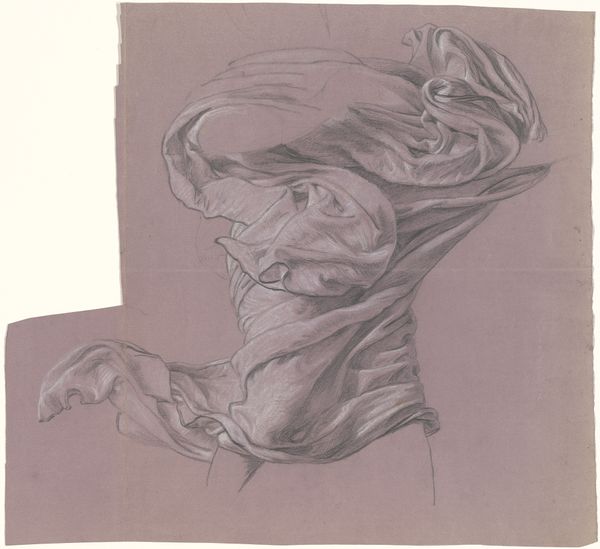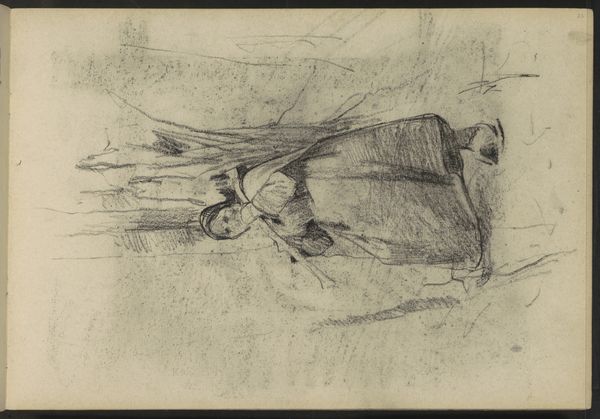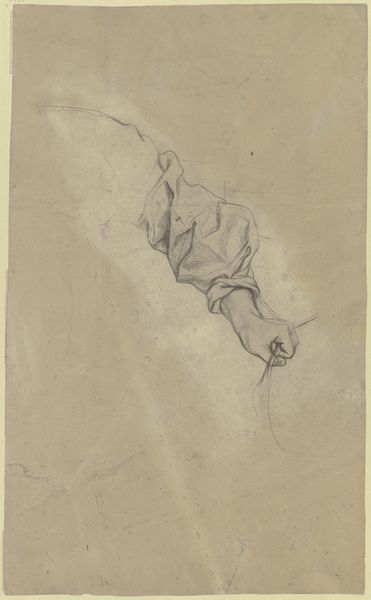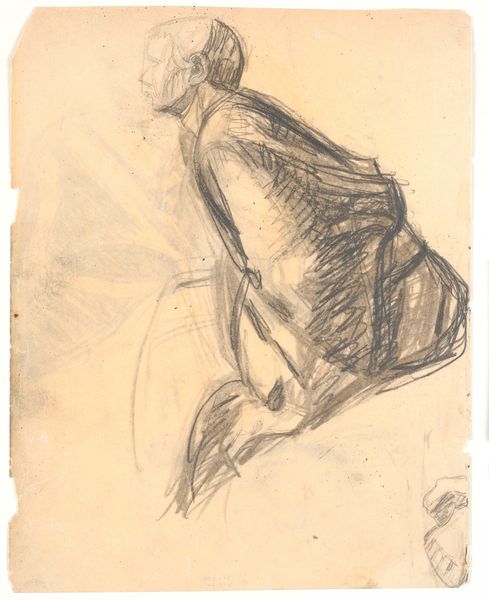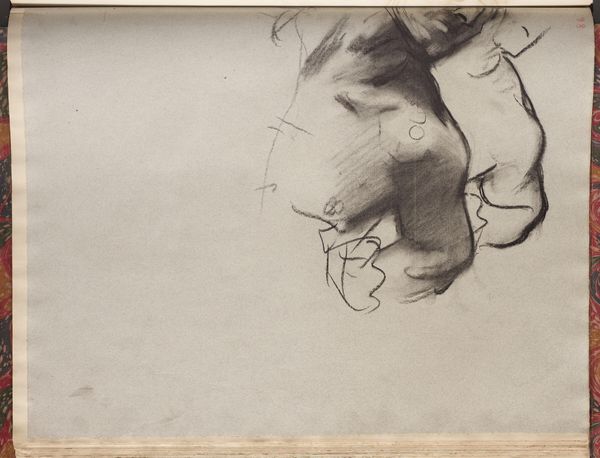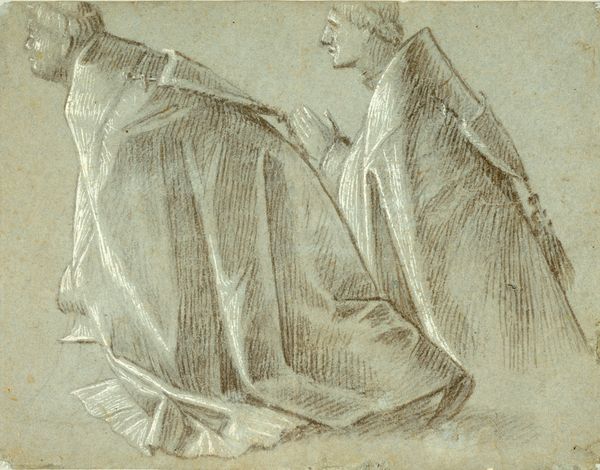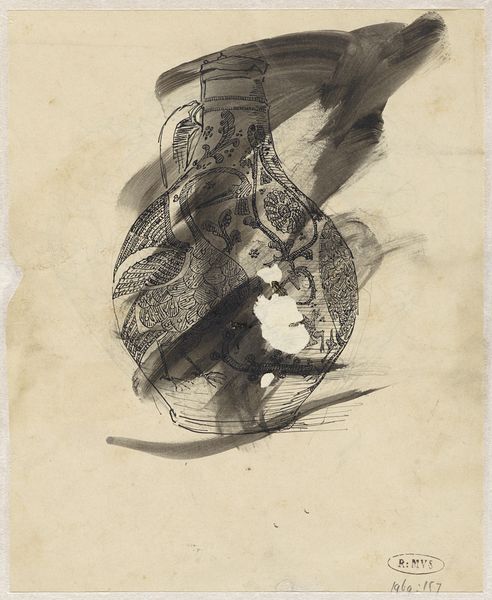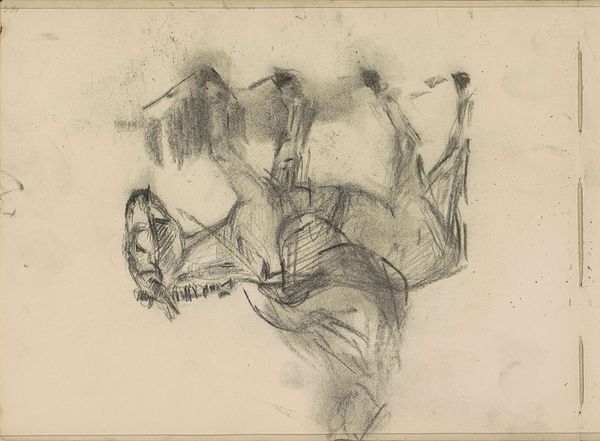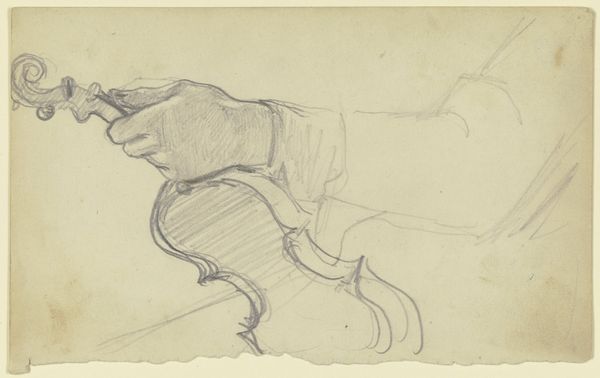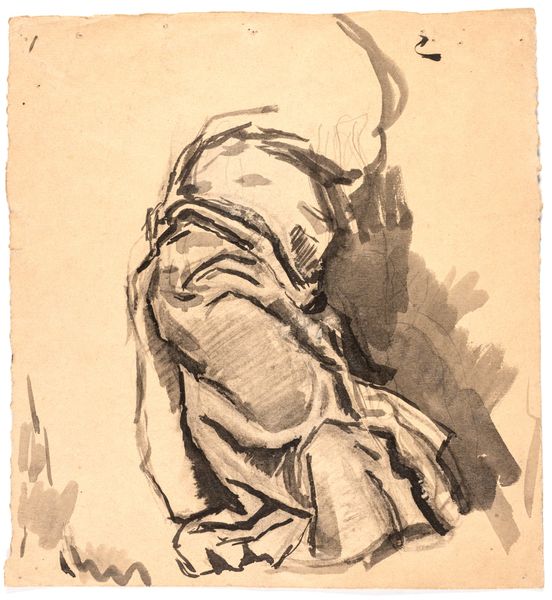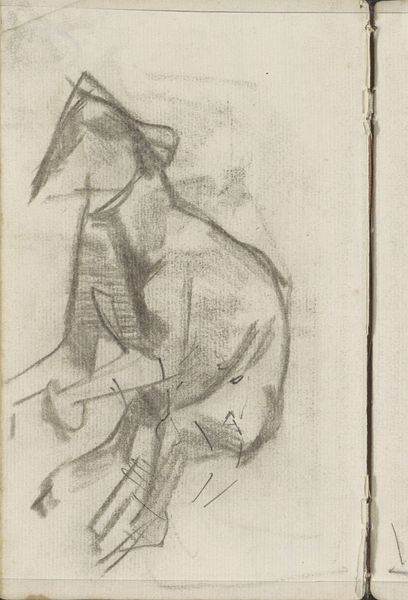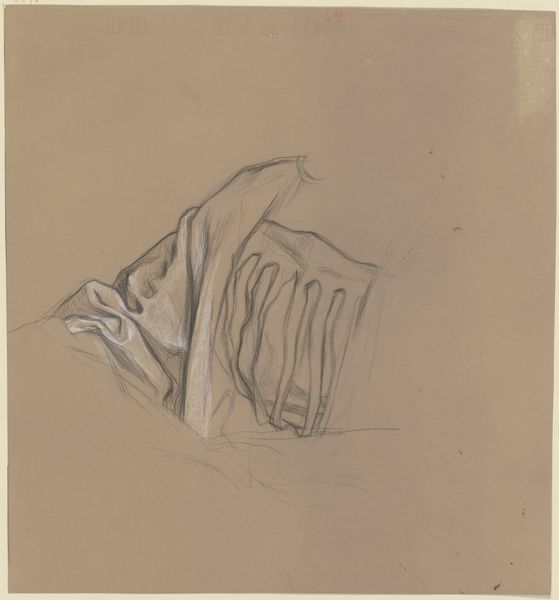![Study of Drapery [verso] by John Singer Sargent](/_next/image?url=https%3A%2F%2Fd2w8kbdekdi1gv.cloudfront.net%2FeyJidWNrZXQiOiAiYXJ0ZXJhLWltYWdlcy1idWNrZXQiLCAia2V5IjogImFydHdvcmtzL2VlOWFmOGU4LTliMGQtNGE0Yi1iOGMxLTc0MzJhMzMwODE4Ny9lZTlhZjhlOC05YjBkLTRhNGItYjhjMS03NDMyYTMzMDgxODdfZnVsbC5qcGciLCAiZWRpdHMiOiB7InJlc2l6ZSI6IHsid2lkdGgiOiAxOTIwLCAiaGVpZ2h0IjogMTkyMCwgImZpdCI6ICJpbnNpZGUifX19&w=3840&q=75)
drawing, pencil
#
drawing
#
pencil sketch
#
figuration
#
pencil
#
academic-art
Dimensions: sheet: 47.94 × 57.79 cm (18 7/8 × 22 3/4 in.)
Copyright: National Gallery of Art: CC0 1.0
Editor: We're looking at John Singer Sargent's "Study of Drapery [verso]," created between 1920 and 1922 using pencil on paper. It strikes me as a practice study, almost like a glimpse into the artist's process. What significance do you find in a seemingly simple sketch like this? Curator: This sketch, while seemingly simple, reveals the deep cultural memory embedded within draped forms. Drapery in art has, for centuries, been a symbol of status, power, and even divinity. Think of classical sculptures, Renaissance paintings. How does Sargent, in stripping it down to this preliminary form, engage with that visual history? Editor: So, by depicting just the drapery, he’s almost referencing a history of representation, even without the figure fully present? Curator: Precisely. The absent figure becomes a potent symbol itself – a void filled with the weight of art historical precedent. What emotional or psychological impact does this incompleteness have, would you say? Editor: I guess it invites speculation. The incompleteness encourages me to project a narrative onto it, fill in the blanks. There’s a sense of something hidden, revealed only partially through the folds. Curator: Indeed, the folds themselves carry meaning. Consider how the play of light and shadow suggests volume, depth, and a kind of kinetic energy, almost as if the fabric is still in motion. This active, symbolic fabric asks us to consider memory embedded in seemingly still images. Editor: That makes me see it differently, like it’s more than just a study of fabric; it's a study of the stories fabric can tell. Curator: And Sargent, by invoking this rich visual language, acknowledges the enduring power of imagery and the stories we tell through them. It's fascinating how much meaning can be conveyed with so few lines. Editor: Definitely, I appreciate that Sargent used a simple sketch to make such a powerful statement about art history and imagery.
Comments
No comments
Be the first to comment and join the conversation on the ultimate creative platform.
